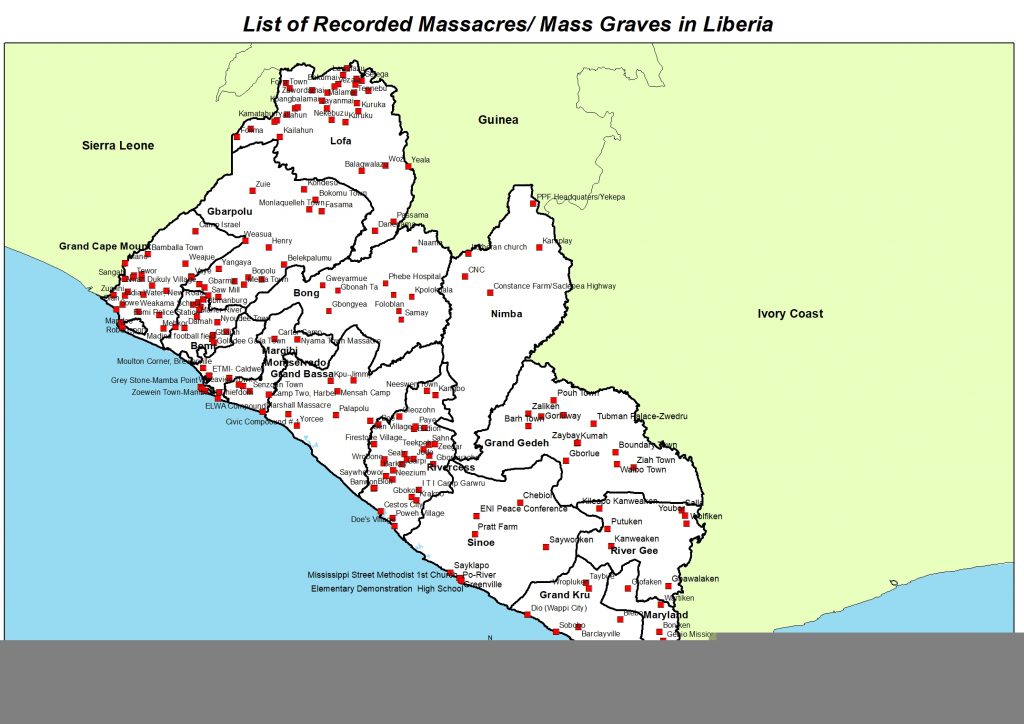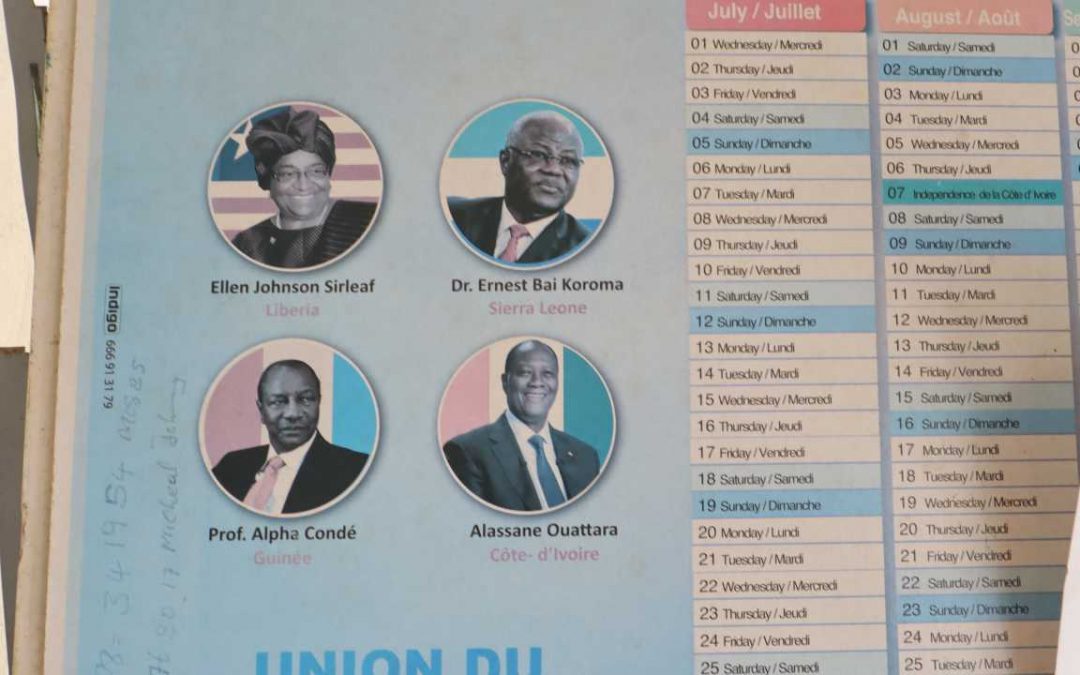This database has been assembled to provide accurate and reliable information on sites of massacres in Liberia. It is considered the first major database on sites of massacres in Liberia, covering the temporality of 1979 to 2003. In particular, the database is envisioned as a strategy to supplement the work of the Independent Human Rights Commission (INCHRL) and the Office for the War and Economic Crimes Court (OWEC). All the materials gathered here were taken from the Truth and Reconciliation Commission Final Report. Some have been verified while others have not. The Ducor Institute is calling on the public (including those in the Diaspora) to engage with the database by providing accurate and reliable information. For example, we have added some a category going beyond the TRC original layout which include, a) victims disaggregated by gender, b) perceived ethno-religious identity and c) status of the site. Please provide new information on these categories. For instance, on category C, if the site does not have a memorial marker, kindly indicate. Also, if the spelling of towns, villages are incorrect, please specify by providing the correct spelling. Likewise, dates: mm/dd/yy. The same for alleged warring faction responsible for perpetrating massacre. The TRC finalised its data collection process without verification of the data. While we are using this as an opportunity to solicit new information and subsequently validate the database, we are also committed to provide systematic information on the history of massacres and violence in in Liberia with the view of support OWEC.

Overview of the Database
Building upon the database of recorded sites of massacres in the Liberia TRC Final Report, we have preceded the data collection by constructing the first comprehensive database on sites of massacres and memorialisation in Liberia. In so doing, the database is organised in the following way: a) county, b) district, c) sites of massacre, d) warring faction responsible, e) estimated number of people killed, f) victims disaggregated by gender, g) victims perceived ethno-religious identity, h) date/year of the incident, i) status of the site, accessibility to the public, and j) transitional justice response—local and national memorial. The TRC’s records do not include victims disaggregated by gender, victims’ ethno-religious identity, and local and national memorial response. These additions are essential, for they enable deeper levels of examination and analysis. Additionally, the TRC’s 203 recorded sites of massacres were verified in a study titled: “Identifying Recorded Sites of Massacres and Applying GPS Coordinates.” Conducted in 2019, the Independent Human Rights Commission of Liberia
(INCHRL) uncovered additional sites of massacres that were not recorded in the TRC Final report.1 Instead of 203 sites of massacre, the INCHR study revealed that there are 207 sites of massacres as noted above. Further examination of the data by the Ducor Institute show that the actual number is 226 sites of massacres. However, this figure is likely to change, increasing or decreasing, as the study conducted by the Commission was only a pilot, carried out in 4 of Liberia’s 15 counties. Taken together, the database addresses the discrepancies between the TRC and Human Rights Commissions records, and through this process, the database method is seeking to streamline the official records. For this research, the database shows 13 community memorialisation projects and four counties recording the highest sites of massacres. The formation of this database is foundational to the selection of massacres sites, the 13 memorialisation projects and the determination that violence was far more intense in certain counties than others.





Wow. This is a hard reminder of the horrors, but also recognizes the lives lost. This is hard work that may have taken a lot mentally, but so important. Thanks to the Ducor Institute.